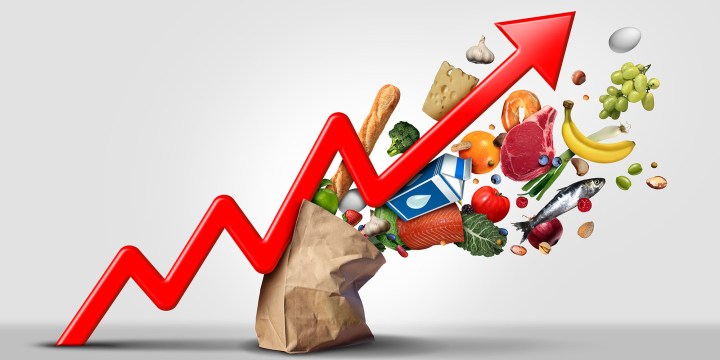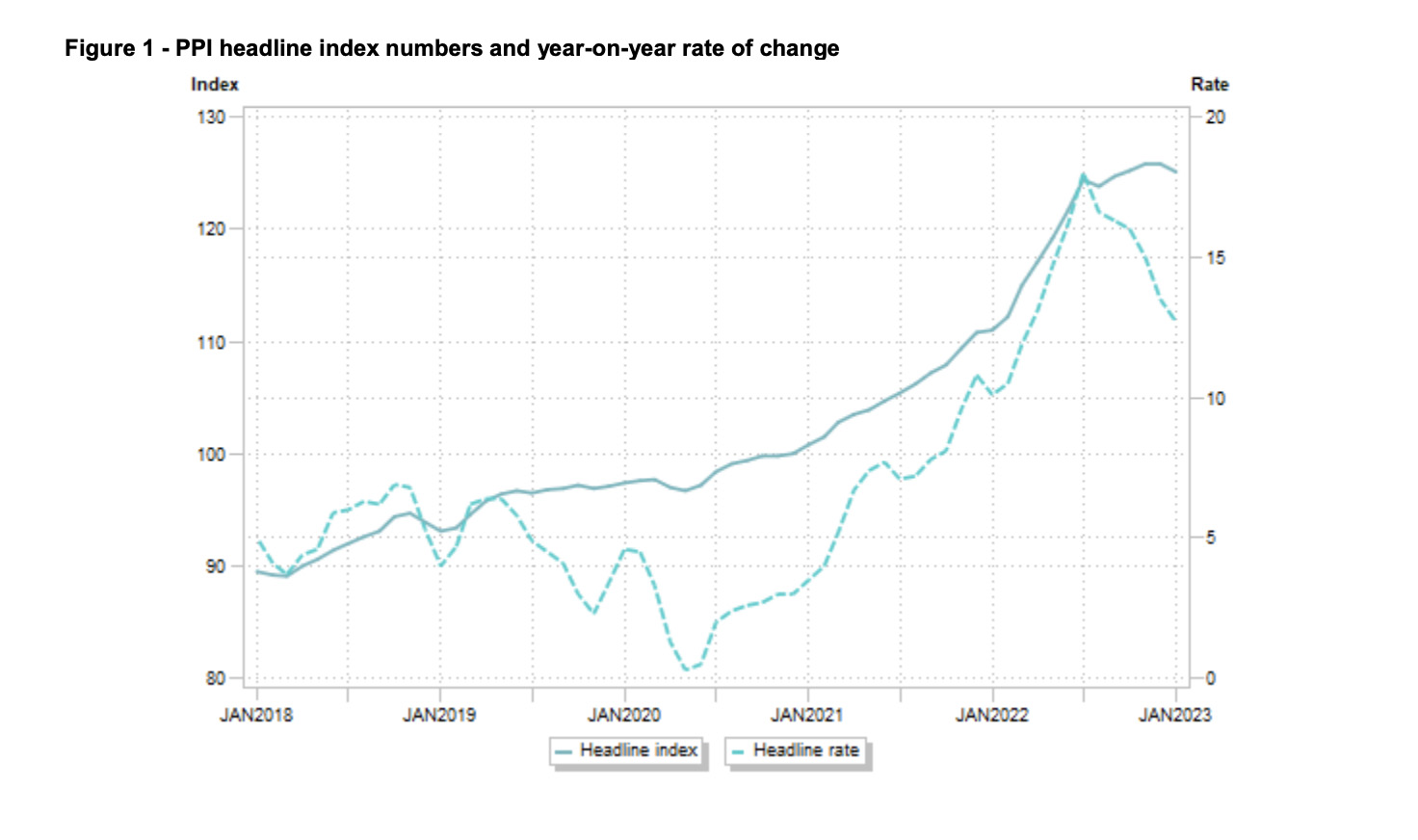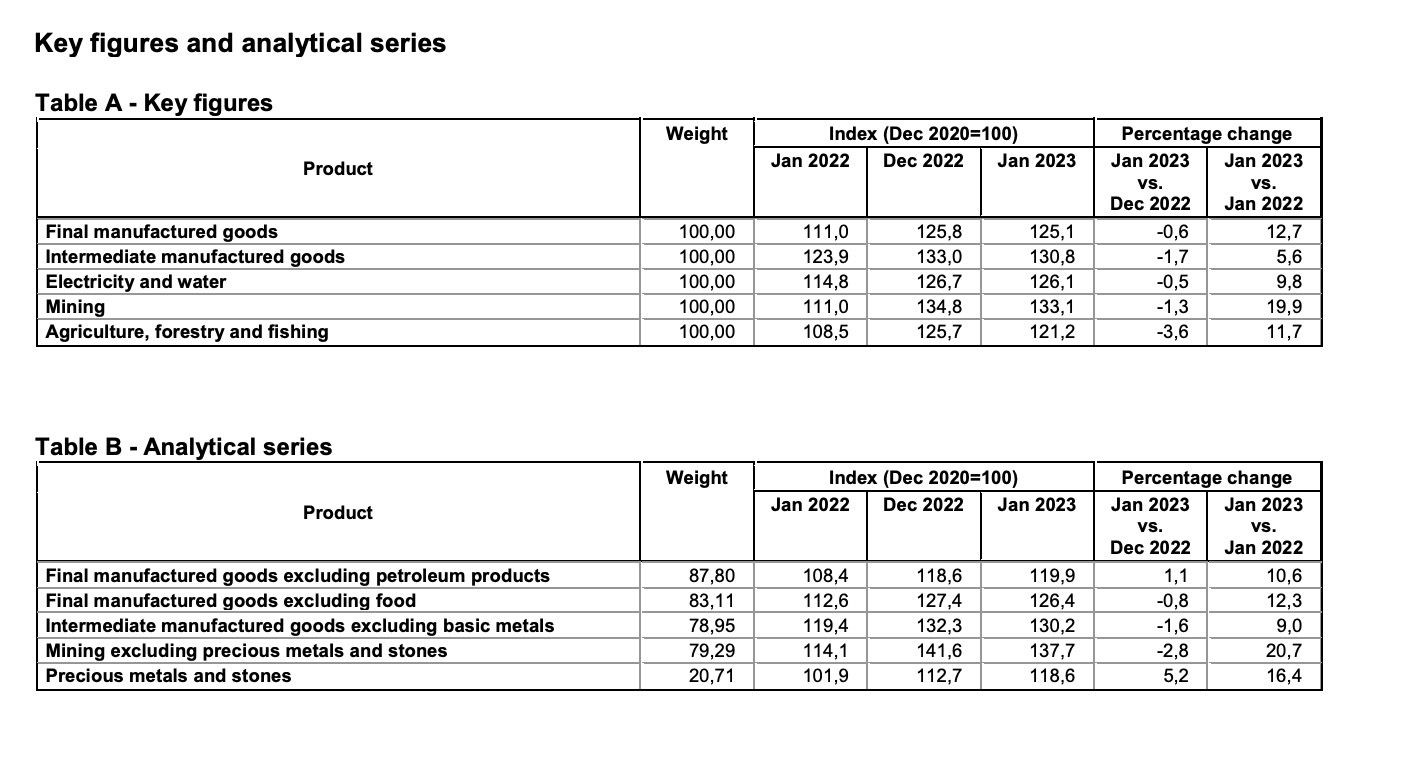ECONOMIC OUTLOOK
SA producer price inflation slows in January, but food product inflation picks up pace

South Africa’s producer price inflation slowed to 12.7% in January from 13.5% in December, while on a monthly basis producer prices fell 0.6%. But mirroring a trend seen in consumer inflation, food product inflation picked up pace. Small wonder the issue has risen to the top of the political agenda as seen in the State of the Nation Address (Sona) and 2023 Budget speech.
The slowing of the overall Producer Price Index (PPI) read was welcome and economists expect producer prices to brake further this year.
“Producer price index inflation eased further in January 2023, driven by a broad deceleration in prices … After averaging 14.4% in 2022, we forecast PPI inflation to average 7.4% this year as price pressures dissipate gradually,” Jee-A van der Linde, Senior Economist at Oxford Economics Africa, said in a note on the data.
Consumer inflation is also winding down, with CPI decelerating to 6.9% in January from 7.2% in December. That trend is also supposed to continue as oil prices come off the boil, global supply chains normalise, and as the South African Reserve Bank’s rate hiking cycle helps to anchor inflation expectations while putting a lid on demand.
But food price inflation has bucked the easing trend even as global food prices have fallen from the record highs scaled last year in the wake of Russia’s invasion of Ukraine.
Food producer inflation sped up to 14.6% in January from 13.6% in December, mirroring the consumer inflation trend on this front. Consumer food inflation accelerated in January to 13.8% from 12.7% in December.
Read more in Daily Maverick: “SA’s rolling blackouts take their toll on retail sales, food inflation and business confidence”
Factors that explain this include the lag time between spot prices and retail prices. But South Africa’s homegrown screw-ups have also kept food prices in a froth.
“Although South Africa is a price-taker for most agricultural food commodities, challenges domestically specifically from persistent, heightened load shedding continue to weigh on production costs,” said Investec economist Lara Hodes.
The impact of the surge in rolling blackouts on food prices has been well documented, from delays in chicken slaughter – which have chowed the margins of food producers such as Astral – to breakdowns in the cold chain to disruptions to irrigation when the crops need water.
Read more in Daily Maverick: “The Finance Ghost: Eskom is leading the poultry industry to the slaughter”
Major retailers have also been burning diesel at an alarming rate to keep the lights on and the pay tills and fridge and freezer units running, but their trading statements say they have been absorbing those costs – for now.
“To ease the impact of the electricity crisis on food prices, the refund on the Road Accident Fund levy for diesel used in the manufacturing process, such as for generators, will be extended to manufacturers of foodstuffs,” Finance Minister Enoch Godongwana said in his Budget speech this week – one of the measures that President Cyril Ramaphosa had hinted at in his Sona.
Visit Daily Maverick’s home page for more news, analysis and investigations
It’s an open question as to why this has also not been extended to retailers. But food inflation is clearly high on the political radar screen, not least because it hits poor and working class households – the ANC’s voter base – the hardest.
Measures on the supply side to help curb food inflation are clearly welcome, but don’t expect the diesel refund for food manufacturers to show instant results.
And other forces are in play that may stoke food inflation further. Rand weakness is one, a factor that can fuel oil prices while also pushing up spot prices for staples such as maize, which are globally priced in greenbacks.
The rand has already yielded the brief gains it put in on Wednesday after markets initially cheered the finance minister’s Budget address.
Read more in Daily Maverick: “Give that man a Bell’s — Rand, bonds, JSE all gain as markets, analysts give budget initial thumbs up”
Late Thursday, it was fetching 18.37/dollar after gaining 16 cents to 18.13/dollar at one point after the Budget speech was being read.
Renewed rand weakness came in the wake of the publication late Wednesday of the Federal Open Market Committee minutes for its meeting on 1 February. The hawkish tone suggested that the US central bank remains in rate hiking mode, which in turn will add pressure to the SA Reserve Bank to also maintain its tightening cycle despite South Africa’s grim economic growth outlook.
Meanwhile, South Africa’s cost-of-living crisis, underlined by the persistent rise in food prices, is showing no signs of abating. The poor are bearing the brunt, but even middle-class households are feeling the pinch.
Regardless of your income, everybody needs to eat. DM/BM


















 Become an Insider
Become an Insider
Comments - Please login in order to comment.